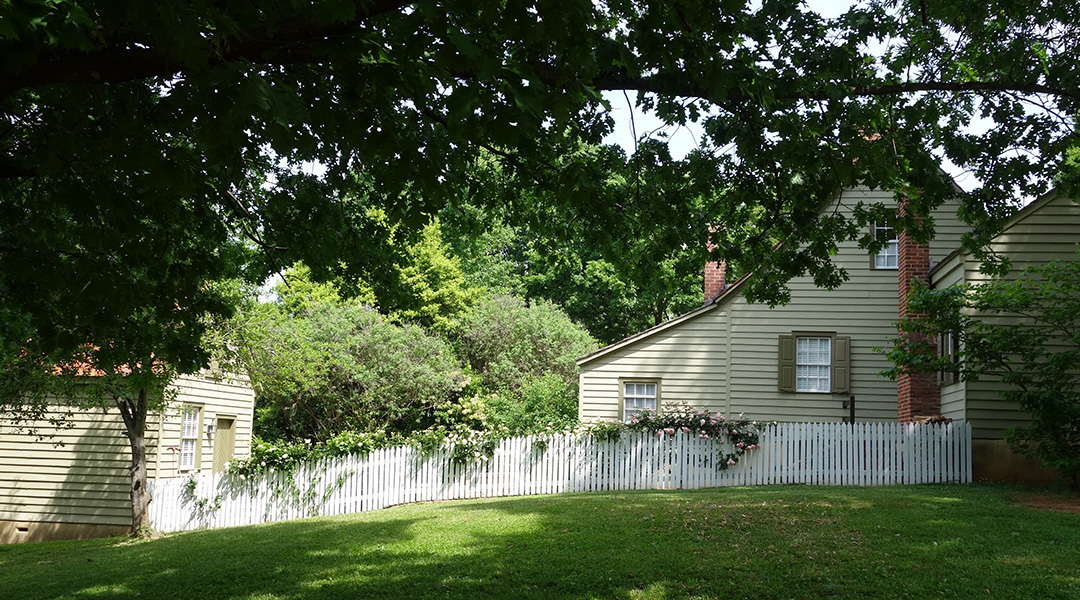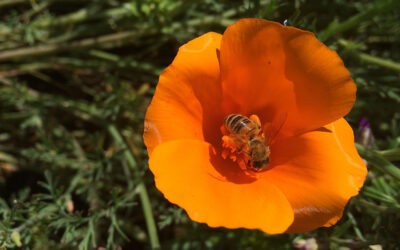When we think of biodiversity, we think of rain forests, not necessarily the “concrete jungle”. Urban environments are thought to hold few, mostly introduced or very common species. But a year-long study of one urban lot in Brisbane, Australia, has revealed an astonishing amount of biodiversity, most of which is native species.
On the first day of the pandemic, three postdoctoral researchers at the University of Queensland — Andrew Rogers, an ecologist, Russell Yong, a taxonomist, and Matthew Holden, a mathematical biologist — had just been told to stay home.
“We were chatting around the breakfast table when Andrew mentioned he had been cleaning his room, noticed a lot of spiders and wondered how many there were and how many types. That discussion spun off into wondering just how many species we had overall,” said Yong.
The three were living in a shared house on an ordinary-sized lot, just 2.7 km from the skyscrapers of the city center. They decided to sample every day for a year, counting everything except microorganisms. They swept their front and back yards with bug nets, sampled dirt and leaf litter, checked indoor and outdoor lights once per night, and watched for birds and other animals.
The project was just a lark, something they all enjoyed and that would keep them busy during the pandemic. “We had no idea we would count our way into a genuine gap in our understanding of urban biodiversity,” said Rogers.
An unexpected plethora of life
Although urban biodiversity has been studied at the whole-city scale, and some surveys have counted species on individual rural acreages, none had investigated the biodiversity in a single, ordinary urban lot. They only expected to find 250–300 species. When they informally surveyed ecologists at a conference, showing them a photo of the property and a map of its location, most guessed similar numbers.
Within weeks, they shot past their initial biodiversity estimate. Within two months, they tripled it. By the end of the year, they had identified a staggering 1150 unique species, including 1034 animals (948 arthropods — insects and their relatives), 103 plants, and 13 fungi.
To answer Rogers’ original question, there were 56 species of spiders. Incredibly, they found 436 species of butterflies and moths, over a third of their total. Their findings have been published in the journal Ecology.
Not just the number, but the types of species were astonishing: More than 95% of the animal species were native, even though all but three plants were non-native. “I think many people assume that urban yards full of introduced ornamental and weedy plants support mostly introduced animal critters, but it turns out, at least on our property, there were far more native critters than we expected,” said Holden.
They found a young velvet worm, blue-banded bees, and a moth whose caterpillars hollow out and eat individual pieces of possum poo. They also found a valved beetle mite that looks like a spaceship, a ladybird beetle that feeds on fungi, and a species of mosquito never recorded in Australia.
For Holden, one of the major takeaways is that the amount of hidden biodiversity revealed by using this survey method — recording every organism every day for a long time — is huge. What would we find if we surveyed natural areas the same way?
“Most natural settings do not receive this kind of survey effort. Scientists usually restrict their surveys to short intervals of time, or to specific types of organisms, such as birds or mammals. Surely, even a small patch of native forest would have tens, even hundreds of thousands of species,” said Holden.
What’s hidden in your own backyard?
The researchers emphasize that there wasn’t anything special about their yard, except that they didn’t mow or use pesticides or herbicides. “I’d like to inspire people to reduce the size of their lawns for more varied vegetation. By just being lazy and giving the mower and pesticides a break, you can create more natural habitat for wildlife,” said Holden.
Although they were well-equipped to identify much of what they found, they sometimes needed expert help. Some of that help came from the citizen science platform, iNaturalist, where they could upload photos and have them identified by experts. Tools like this bring backyard biodiversity surveys within anyone’s reach.
“What I hope is, through this paper, even more people realize that answering this question is 1) possible; 2) important; and 3) fun,” said Yong.
Corey Callaghan, a global ecologist at the University of Florida with expertise in biodiversity modelling using citizen science data who was not involved in the study, said “The paper shows the potential of discovering what is around us. The urban system is full of surprises, and urban ecology itself is a relatively new field of study, so studies like this really highlight its potential to continually advance our knowledge.”
“I had been living in the house for a couple years, and that entire time I had a bunch of blue-banded bees and the occasional teddy bear bee sleeping under my bedroom window,” said Rogers. You never know what you might find in your backyard if you really look.
Reference: Russel Yong, et al., The house of a thousand species: The untapped potential of comprehensive biodiversity censuses of urban properties, Ecology (2023). DOI: 10.1002/ecy.4225
Feature image credit: Rick Lobs on Unsplash

















